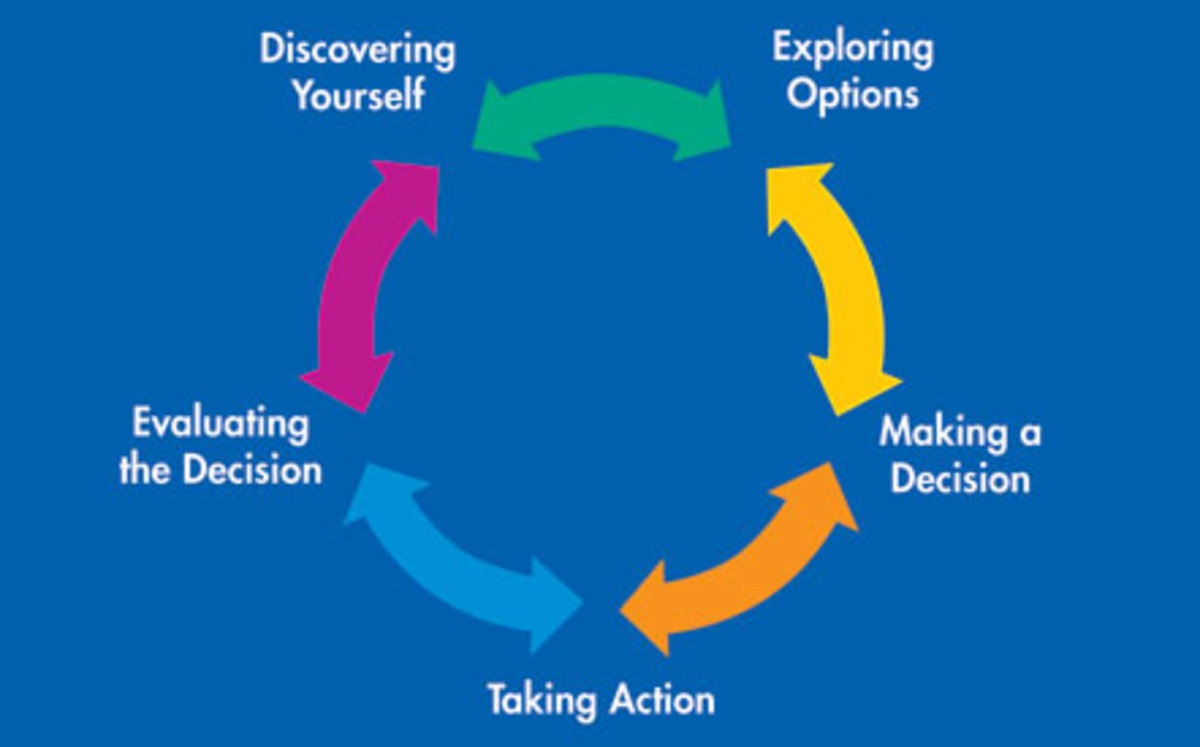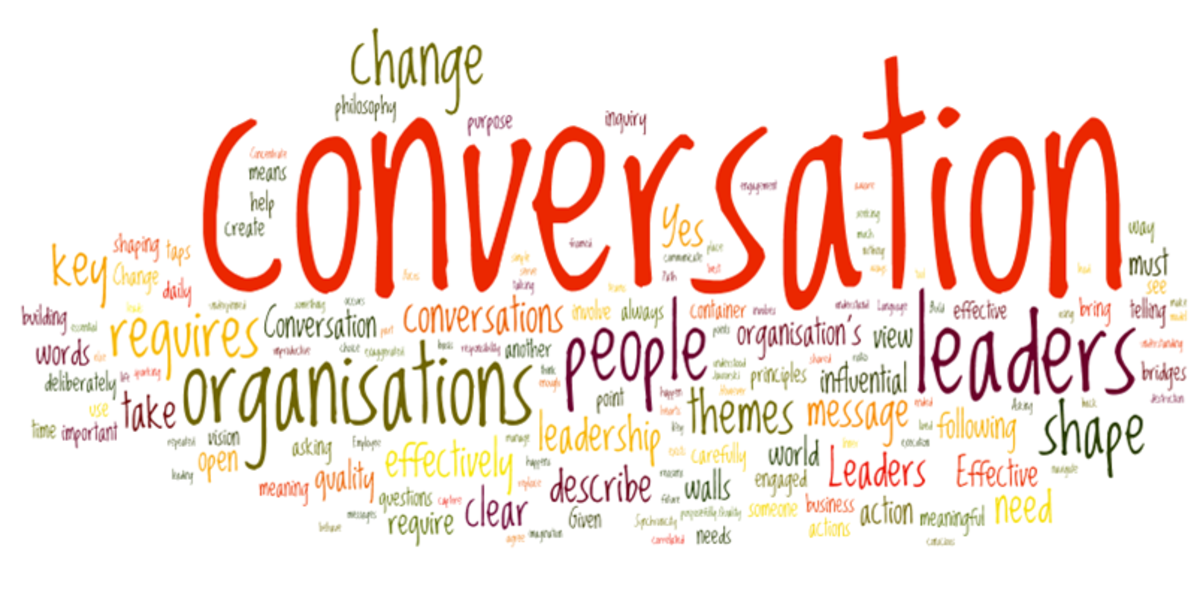How to Develop Effective Communication Skills
The world depends on effective communication skills. From the basic dyad (two persons) to the flurry of geopolitical issues, adept exchange of information and ideas is unequivocal in importance and will always be the ground-zero of human relations. Interpersonal communication determines the quality of social interactions.
How then is communication skill developed? Interpersonal communications is a dynamic and broad field of study; so there are many aspects and methods that could be offered for becoming a better communicator. Five practicable ways to enhance one’s relations will be examined here.
Active Listening (Humorous)
Other Listening Tips
- Listen completely - don't think about speaking
- Give pause before speaking to allow a person to finish talking
- Make a rule to always clarify what a person has said
- Listen non-verbally - nod, make eye contact, use appropriate seriousness, acknowledge the person and the feelings
Effective Listening is Active Listening
Listening is among the most crucial aspects of communication because it is the way messages are received, understood, and evaluated—and there is nothing worse than having what you say misunderstood, downplayed, or altogether ignored.
There are many types of listening as well, based on purpose, culture, and identity; but the most important form is active listening.
To listen actively means for one to receive a speaker’s message, internalize it, and send the message back to the speaker as the listener thinks he heard it. The components are simple but very important. First, a listener paraphrases what he thinks the speaker means. This is also called clarification. By this the speaker is able to confirm whether or not his message has been interpreted correctly.
Second, a listener echoes the speaker’s feelings, whether they have been expressed or implied. There is nothing wrong in saying “I understand your frustration” or “I see how you feel.” Such statements acknowledge the speaker without judging the situation. Third, a listener asks questions. Follow-up questions bring additional information that anchor understanding and meaning. Good questions will motivate speakers to express their thoughts and feelings.
Pass the Ball: Limit Self-Talk
Effective communication is not unlike two athletes practicing their sport. Baseball players toss, basketball players pass, and tennis players rally. In communications the “ball” is conversation and it should belong to both players—so throw it!
No one enjoys a person who disregards communication rules and drones on about self or even the issue at-hand. It is an easy way for a person to strand a conversation or to teach others to avoid him. Interestingly, the opposite is nearly as bad—leaving the ball in another’s hands. A person that never talks about himself or the issues, for whatever reason, stifles conversation from inception and leaves others to misunderstand him or perceive him as weird.
A dyad doesn’t exist without two people or their communication. There has to be a point where we socially interact with one another, and speaking is the essential way humans do it. When we toss the conversational ball we balance our self-talk, whether personal or issue-based, with the people around us, for each person has a right to be both Speaker and Receiver in dyadic communication.
Thus, when we pass the ball communication is able to occur; and listening to others also benefits us by what we learn.
Josh on Non-Verbals (Good)
Which of the six major non-verbal methods mentioned in this section do you use regularly?
Make Sure Verbal and Non-Verbal Communication Match
Non-verbal communication is as much communication as what is spoken—and often more credible.
Everybody uses a blend of verbal and non-verbal communication and, usually, non-verbal messages support verbal messages in various ways.
For instance, we raise our voices to emphasize (accent). We smile when speaking to small children (complement). We wink when joking (contradict). We purse our lips and move our heads to indicate a desire to speak (control). We raise our brows when confirming (repeat). We signal to replace a verbal message, as with the “OK” sign (substitute).
But what happens when verbal and non-verbal messages don't match?
Studies have shown that when there is doubt about verbal messages, people tend to believe non-verbal cues. Research claims that non-verbal cues are four times as effective as verbal ones. In fact, more than 60 percent of meaning is believed to be communicated non-verbally.
People believe non-verbal messages over verbal ones because they function below conscious awareness. It is easier for people to speak a lie but not as easy to perform one.
Explanation of High and Low Context Cultures (Excellent)
Think About It
Most of us have encountered people new to the area, often in cars pulled up next to us seeking directions. How could the arrival of a newcomer to town be a high-context situation? How could it be a low-context situation?
Speak to Everybody: Inclusion-Exclusion Principles
No one likes being left out. We leave others out of the communication process when we deprive them of information although on the surface it may appear that they have been included. This happens very often and in many contexts.
People of the same nationality or ethnic group can strand non-members with the use of their language or by their practices. Religious adherents do this by not being inclusive of persons outside their group or using religious language unfamiliar to seekers. Doctors do it by using scientific terminology when common words are necessary.
Much of this has to do with the situation context, considered high or low. A high-context culture is one in which much of the information is in the context or in the person rather than being explicit in verbal messages. So, two doctors or a group of doctors and researchers could speak in medical terminology easily without need of interpretation. A low-context culture is the opposite, one in which most information is explicitly stated.
The key to including others is to be deliberate about filling in details that will serve those that are uninformed. Another way to embrace outsiders is to ask for their opinions.

Learn How to Appraise
Effective communication skills require that at some point in our social interactions judgments must be made. This may occur in formal and official settings but are more common in interaction with family and friends.
There are times when we need to be critical and times when praise is appropriate; but these moments aren’t tough to figure out. The only necessary rule is that any criticism or praise offered be truly helpful.
Sometimes, however, an honest appraisal will be a negative one, so how then should we respond? Here are some suggestions.
- Point out behavior errors rather than personality errors: instead of “Why are you so mean?” say “I think you overreacted with the secretary.”
- Be positive with criticism: instead of “Your writing is terrible” say “I think your writing can improve”—and be constructive in explaining how to improve it.
- If you must be negatively critical do it face-to-face and not through a weaker medium like a letter or email.
- Express criticism in private
- Use I-messages: instead of “That was a great performance” say “I really enjoyed your performance.”
These five tactics offer people more effective communication skills whether in their professions or their daily interactions.








